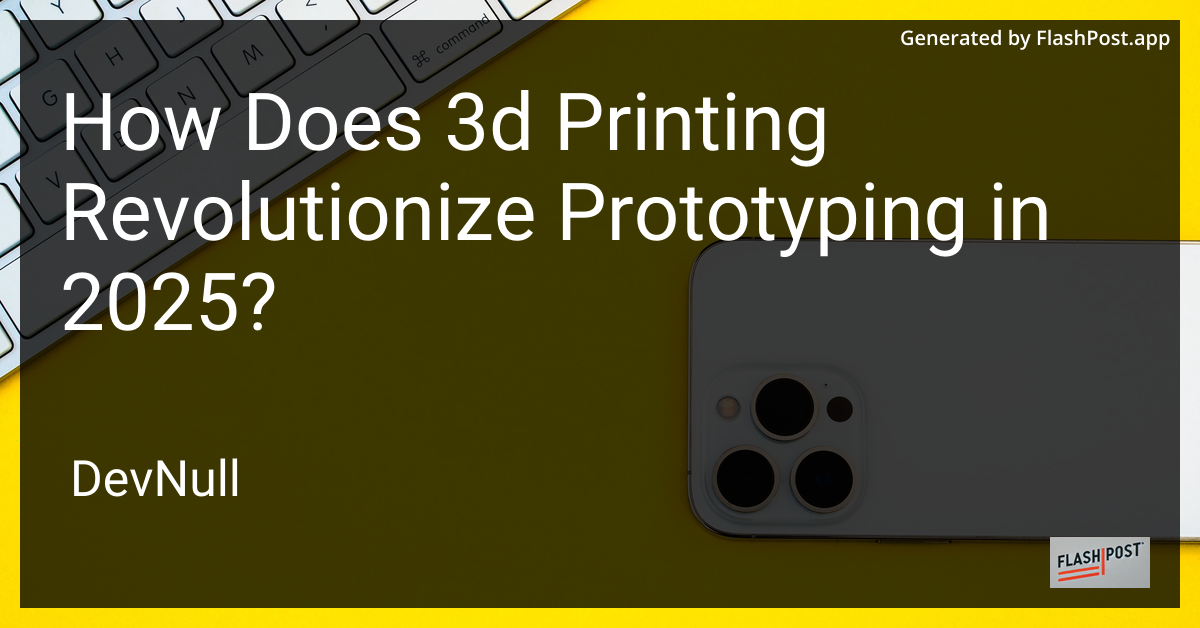

How Does 3d Printing Revolutionize Prototyping in 2025?
3D printing has evolved significantly over the past few years, culminating in a true revolution in prototyping as we hit 2025. This transformative technology is not just a tool but an integral part of the design and manufacturing landscape. In this article, we’ll explore how 3D printing revolutionizes prototyping processes, making them faster, more efficient, and highly innovative.
The State of 3D Printing Technology in 2025
By 2025, 3D printing, also known as additive manufacturing, has achieved remarkable advancements. These developments include:
-
Increased Speed: Modern 3D printers are incredibly fast, enabling rapid prototyping that significantly cuts down the time from design to final product.
-
Enhanced Precision: With refined resolution and precision, 3D printing allows for intricate designs that were previously impossible or too costly with traditional methods.
-
Material Diversity: A wide array of materials, including metals, ceramics, and biodegradable polymers, are available for printing, making it possible to create prototypes that closely mimic the final product.
-
Integration with AI: AI-driven design tools aid in optimizing designs for 3D printing, enhancing both performance and sustainability.
The Impact on Prototyping
Faster Iterations
One of the most significant benefits of 3D printing is the ability to perform rapid iterations. Designers and engineers can quickly produce multiple versions of a prototype, testing and refining each one. This rapid development cycle shortens the time to market and boosts innovation.
Cost-Effectiveness
Traditional prototyping often involves costly setup and tooling. 3D printing negates these expenses by allowing direct manufacturing from digital files. This cost-effectiveness permits startups and small businesses to compete with larger entities.
Customization and Innovation
The flexibility of 3D printing means prototypes can be easily customized. This capacity for personalization drives innovation, as companies can explore bespoke solutions and niche markets with minimal investment.
Risk Reduction
By producing accurate and functional prototypes closer to the final design, businesses can identify potential issues early in the development process. This foresight reduces resource waste and improves the overall feasibility and sustainability of projects.
Case Studies: Industry Applications
In various industries like aerospace, automotive, healthcare, and electronics, 3D printing has transformed how prototypes are developed. From aerospace companies creating complex engine components to healthcare innovators developing personalized medical devices, 3D printing is at the forefront of modern engineering.
Preparing for Future Innovations
As the technology continues to advance, staying informed is crucial for individuals and businesses looking to capitalize on the new opportunities that 3D printing presents. Whether you’re considering upgrading your home printing setup or investing in cutting-edge technologies, understanding the current landscape is indispensable.
For anyone interested in the broader context of printer technology advancements, you might want to explore some related topics:
- All-in-one home printers comparison to find the best options for your personal and professional needs.
- Learn how to dispose of old printers safely to ensure eco-friendly practices.
- Looking for budget-friendly options? Check out the affordable 3D printer sales to get started on your prototyping journey.
Conclusion
3D printing in 2025 is not just a tool but a cornerstone in the prototyping and manufacturing landscape. Its ability to enhance innovation, reduce costs, and accelerate time-to-market makes it an indispensable asset. As we look to the future, the continued evolution of 3D printing promises even greater innovations and efficiencies.
Embrace the change, and stay ahead of the curve in how you design, create, and transform your ideas into reality.
